Seahawks players call for end of turf fields in the NFL. They aren’t the only ones
The same field on which Odell Beckham Jr.’s career ended, at least for now, during a Super Bowl is also where DK Metcalf’s season went on hold.
It’s where J.C. Jackson’s season ended.
It’s where Mike Williams’ cleat stuck in the ground, causing him to miss at least the next month.
All four players got injured in non-contact situations leaping from, landing onto or trying to make a cut in the artificial playing surface at SoFi Stadium outside Los Angeles. Metcalf’s and Jackson’s patellar-tendon knee injuries and Williams’ ankle injury happened in the same game, the Seahawks’ 37-23 win over the Chargers last weekend that had almost as many carts as touchdowns.
To many players, SoFi is a palatial, zillion-dollar stadium with a 10-cent field.
“You look at it, guys were just getting hurt left and right,” Seahawks safety Ryan Neal said Sunday at SoFi Stadium. “J.C. Jackson had a frickin’ crazy injury. Mike Williams. DK.
“You hate seeing stuff like that, anytime. It’s not even off people hitting somebody.
“It’s the freakin’ surface.”
Beckham’s foot stuck into SoFi Stadium’s synthetic grass when he was trying to get to a pass thrown behind him for the Rams in the Super Bowl against the Cincinnati Bengals in January. He tore the anterior cruciate ligament in his knee. He had reconstructive surgery and hasn’t played since.
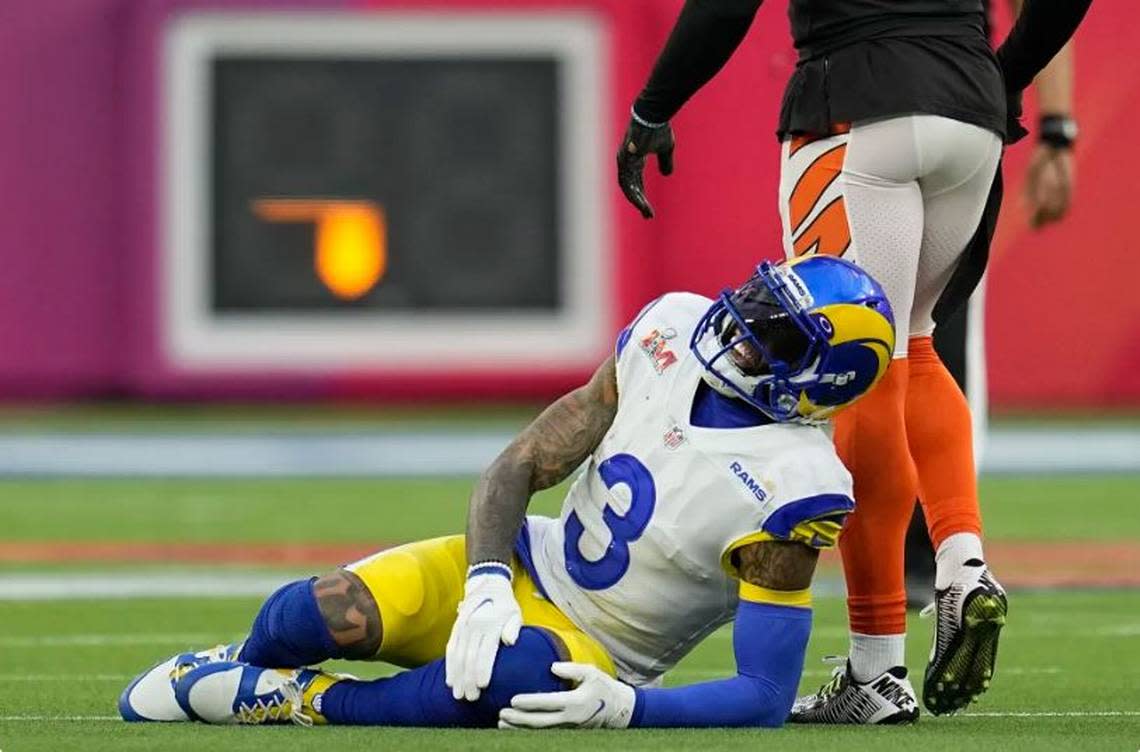
Because the entire league — and much of the world — was watching that Super Bowl seeing Beckham go down without getting hit, his injury and the surface it happened on got a lot of attention that night. None of it was good.
Former Washington State wide receiver River Cracraft, now with the Miami Dolphins, posted on Twitter during the Super Bowl nine months ago: “I believe @obj injury doesn’t happen on grass. Turf needs to take a hike”
In 2020, NFL Players Association president J.C. Tretter cited NFL injury data from 2012-18 that showed players have a 28% higher rate of non-contact lower extremity injuries when playing on artificial turf.
“Of those non-contact injuries,” Tretter wrote in a newsletter to union members, “players have a 32% higher rate of non-contact knee injuries on turf and a staggering 69% higher rate of non-contact foot/ankle injuries on turf compared to grass.”
Tretter’s conclusion: Make all NFL fields natural grass.
Injuries across SoFi Stadium
Sunday in the Seahawks’ game at Los Angeles, Chargers receiver Williams was trying to turn up the same field after a fourth-down catch. His foot stayed anchored in the turf. When Seahawks cornerback Michael Jackson tackled him, his ankle turned badly. Williams has a high-ankle sprain with ligament damage.
Jackson’s knee gave out earlier in the game as he leaped from the turf trying to deny Seattle’s Marquise Goodwin a touchdown catch.
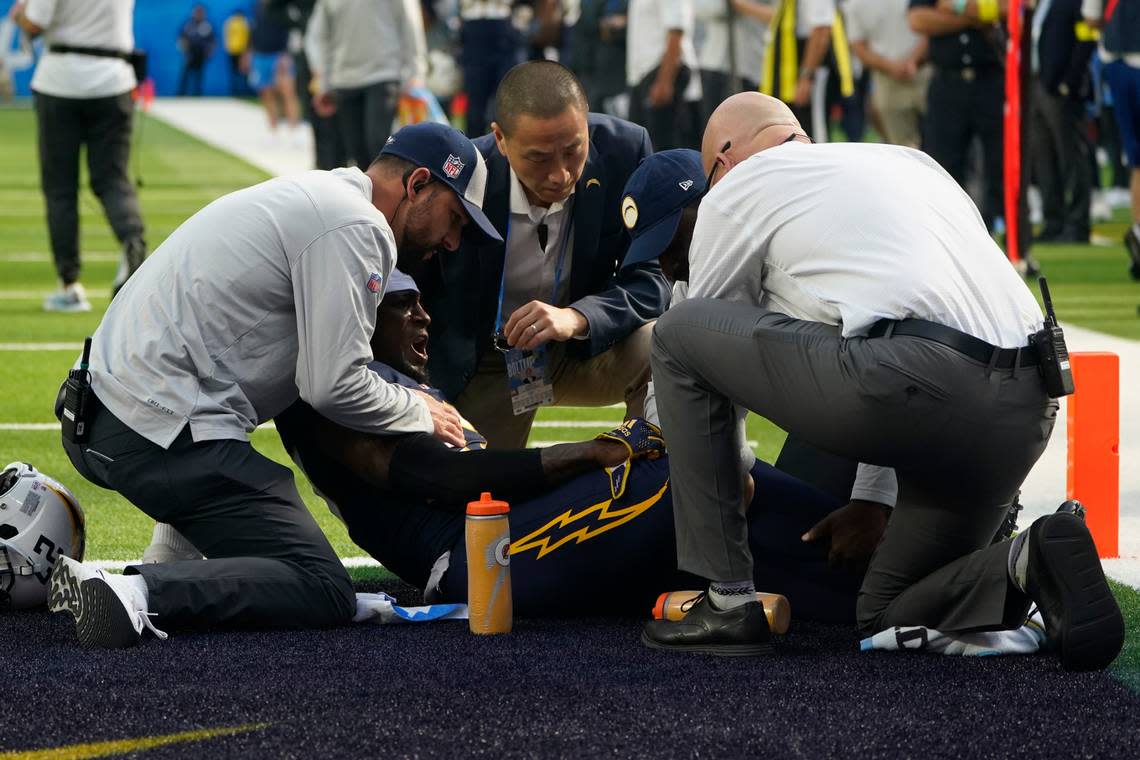
Metcalf landed onto the sideline at the goal line after leaping in an attempt to catch Geno Smith’s high pass to him. Metcalf’s left ankle turned awkwardly inward upon landing on the turf, sending pain up his left leg through his knee.
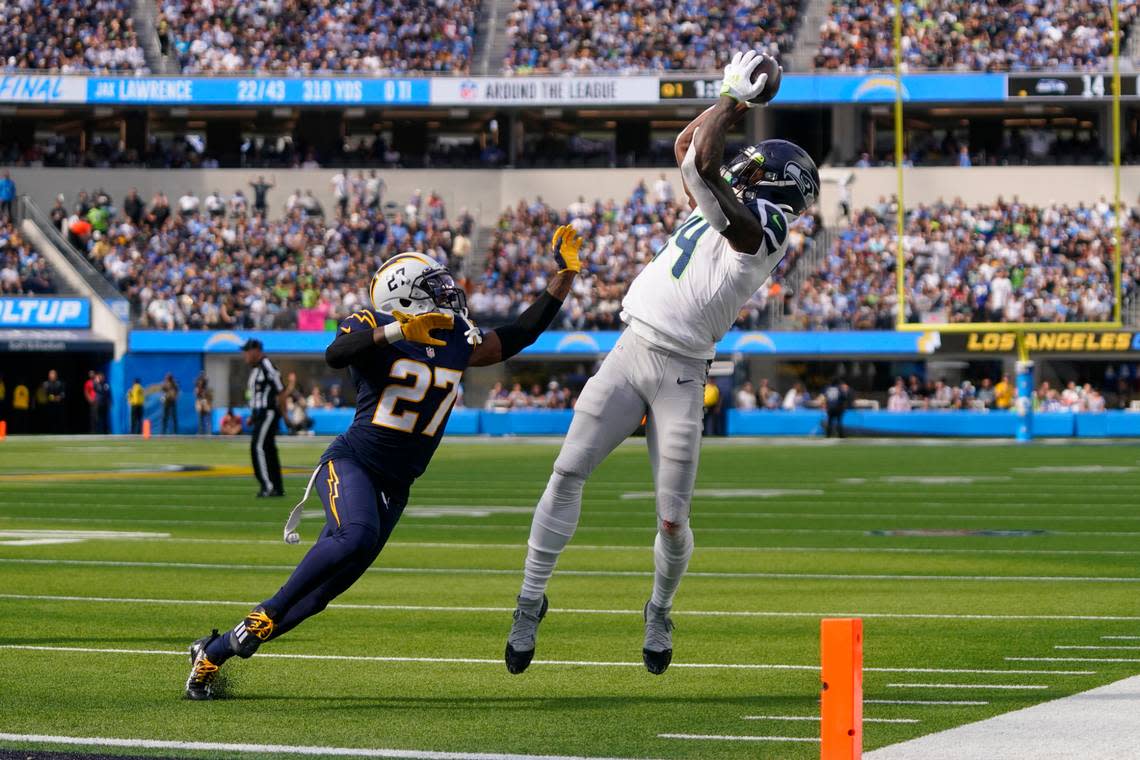
The Seahawks were relieved to learn he doesn’t need surgery. Metcalf didn’t practice Wednesday. His status for Sunday when NFC West-leading Seattle (4-3) hosts the New York Giants (6-1) is unknown if not unlikely.
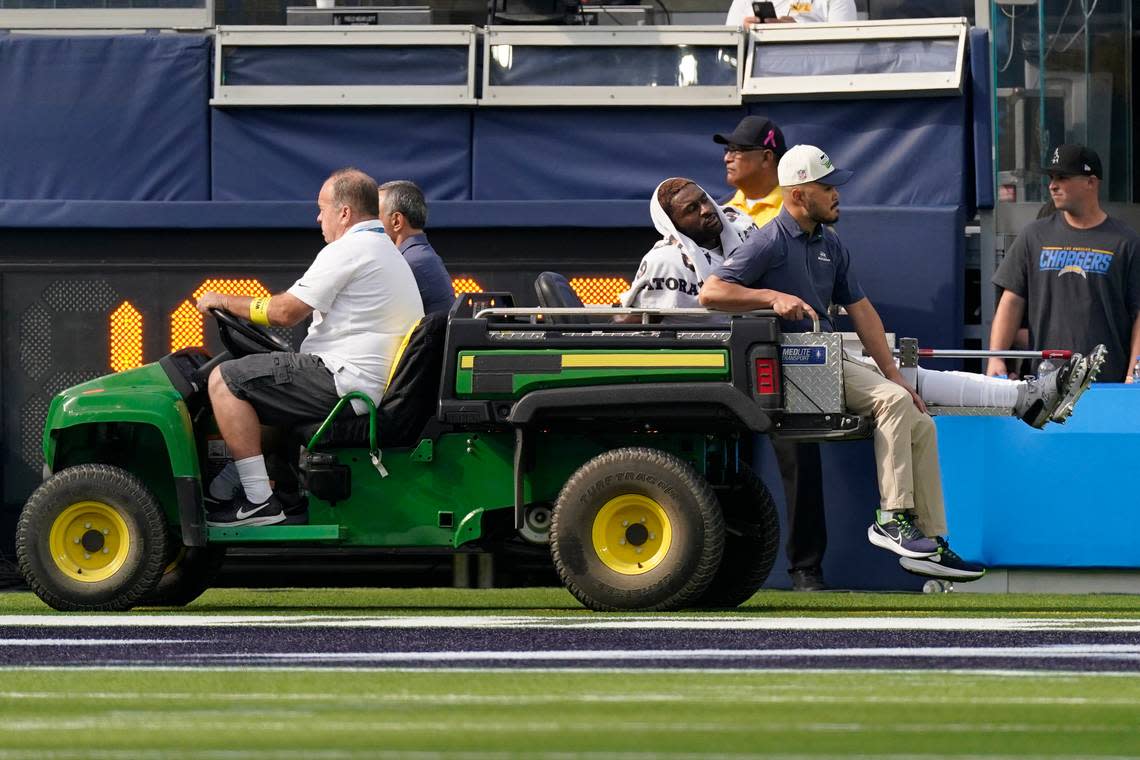
Jackson’s and Metcalf’s injuries happened in one end zone and at the opposite one. Richard Kent, a biomechanical engineer the NFL starting asking in 2008 to study the league’s artificial turf fields, told Yahoo! Sports this year he found maintenance to be a key factor in a field’s risk to injury.
“Turf can get too aggressive if crumb rubber pellets lost each season aren’t replaced,” Yahoo! reported last month from Kent’s findings. “Or it can become too hard and slippery in spots that are repainted frequently.”
Sunday, a couple hours after the Seahawks’ win ended, the stadium crew was spray-washing both end zones and wiping off the Chargers’ midfield logo. They then repainted the synthetic field with the Rams’ logos and markings for their home game this weekend against the San Francisco 49ers.
“It’s way more frustrating. It happens every year,” Neal said of non-contact injuries on artificial turf. “You see just big-time players making a break, like, even just planting and breaking. But for some reason when you play on surfaces like turf there’s just no give. Whatever you put in the ground you are getting right back.
“It’s just unfortunate. I hate to see it like that, for anybody, on any team.
“It sucks. Every time.”
Seahawks defensive captain Quandre Diggs, 29, says it’s time to ban all turf fields.
“For me now, the older I get the more I hate the turf,” Diggs said Wednesday.
“Just the kind of effects that you can feel on the joints and things after (games). The grass is so much better.
“When you see all these injuries on turf, it definitely sucks. All the injuries we had, Chargers and Seahawks on Sunday, I just feel like that turf....you know.”
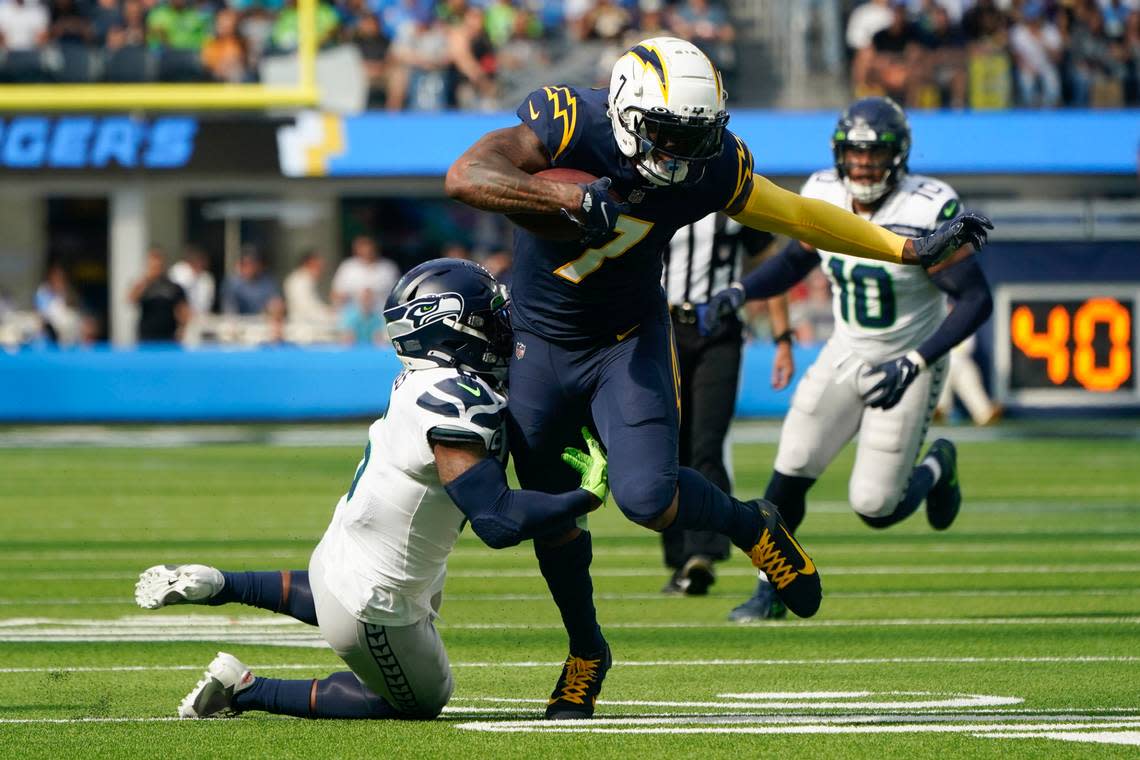
Diggs has a problem with the Seahawks’ home field, too. He says Lumen Field is “sticky.”
He said early in Seattle’s last home game, against Arizona, his foot planted in the Lumen Field artificial turf and stayed there as he tried to tackle Cardinals receiver Rondale Moore. It was the same leg Diggs broke and had surgery on in January.
He was thinking as it happened: “Get that thing out of the ground as fast as possible.”
Diggs has particular disdain for the turf at SoFi Stadium.
“I’m not a big fan of the Rams-slash-Chargers’ field turf. I think it’s slick,” Diggs said. “You see all these injuries — I think it was the Giants’ stadium, Giants’ and Jets’ stadium a few years ago, where all those teams, the 49ers went out there and had guys with ACLs and all types of stuff (those 2020 Niners complained MetLife Stadium’s turf also was ‘sticky’).
“So you see that and you just kind of wonder: Why can’t we have natural grass everywhere?”
The answer, of course: Money.
Owners’ stadium revenues
Exactly half the NFL, 16 teams, play on natural grass. That includes the natural grass/synthetic hybrid fields in Green Bay and Philadelphia.
The other 16, including Seattle, play of artificial surfaces. Those have advanced far beyond the brutal, mat-over-concrete Astroturf fields of the multipurpose stadiums that were the rage of the 1970s and ‘80s.
The Seahawks, Rams and Chargers are the only NFL teams west of Texas that play home games on turf instead of grass. The Rams and Chargers’ stadium is indoors. Seattle’s in near-constant rain during the fall and winter.
But there’s also this:
Billionaire team owners spend shared league media-rights and licensing revenue on player salaries. Each team gets an equal share of those profits and spends them more or less equally, under an equal salary cap.
An owner’s cash-making machine, for profits he keeps not shares, is his stadium —specifically the concessions, ticket sales and other revenues from all events at his venue.
Maintaining a natural-grass field all year round is expensive. It takes more equipment, personnel, labor, seeding, planting and sodding. Costs to keep up a grass field take money off an owner’s bottom line.
Plus, NFL team owners host only eight regular-season and one or two preseason games per year. They seek to maximize the profits they don’t have to share with the rest of the league by having other events in their stadiums besides football: concerts, soccer, monster-truck shows, you name it.
It’s easier and ultimately less expensive in maintenance costs to host multiple events by rolling up artificial turf or having concerts on top of a synthetic surface than it is by tearing up natural grass fields.
As for the argument it’s not feasible for teams that play in indoor stadiums to have grass fields, they do in Arizona and Las Vegas. Those stadiums each have a natural grass field on a giant tray that rolls into and out of the venue. The grass grows outside in the days between games, gets rolled inside to play on, then goes back out for more growth and maintenance.
Something like that may be what Seattle’s Lumen Field does as one of 16 sites in North America that will host the 2026 World Cup soccer championships. Or Seattle’s organizers could replace the entire artificial turf field with real grass that year in advance of and through hosting the World Cup.
FIFA, governing body for international soccer, requires natural grass fields for all World Cup matches.
NFL studies on turf and injuries
The NFL commissioned an examination of lower-extremity injuries reported by all 32 teams in games from 2012-16. Dr. Christina Mack, an epidemiologist at the University of North Carolina, was the lead author of the study. It was published in 2019 in the American Journal of Sports Medicine.
The study found “play on synthetic turf resulted in a 16% increase in lower extremity injuries per play than that on natural turf...
“The higher rate of injury on synthetic turf was notably stronger when injuries were restricted to noncontact/surface contact injuries.”
In the three years since that study, the NFL has said the higher rate of lower-extremity injuries on synthetic surfaces have gone down significantly.
Jeff Miller, the league’s executive vice president overseeing player health and safety, told Yahoo! Sports in 2021 the difference in such injuries on grass and turf was “negligible.”
Many if not most NFL players don’t believe that.
Odell Beckham Jr., DK Metcalf, Mike Williams and J.C. Jackson definitely don’t believe that.
At least one NFL coach doesn’t believe that.
“I think we definitely need to look really seriously at this,” Seahawks coach Pete Carroll said. “I mean, it’s been a discussion before.
“We’ve got to do what’s right, what’s safest for the players. We’ve got to make those choices. I mean, I would pound on the drum for that.
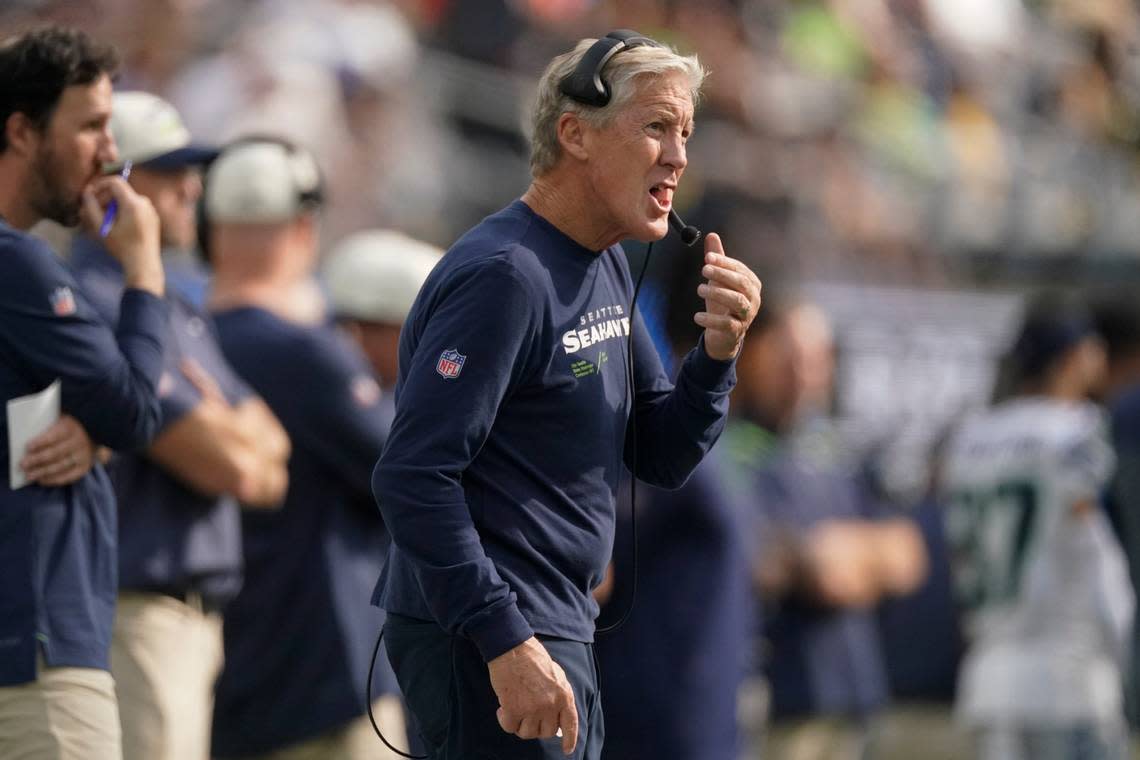
“I know there are numbers and there are studies. We’ve got to figure out where the study comes from, and who’s paying for it,” Carroll said. “There’s a lot of stuff that we’ve got figure out.
“We’ve got to do the right thing. But we’ve definitely got to keep looking at it, because every now and then it just feels like something’s up and too many guys going down when they’re not even touching them.
“We’ll see. The turfs are way better than they used to be and all that kind of stuff, but we’ve just got to see.
“I know I’ll get in trouble here,” Carroll said of the league, “so I’ll shut up.”
